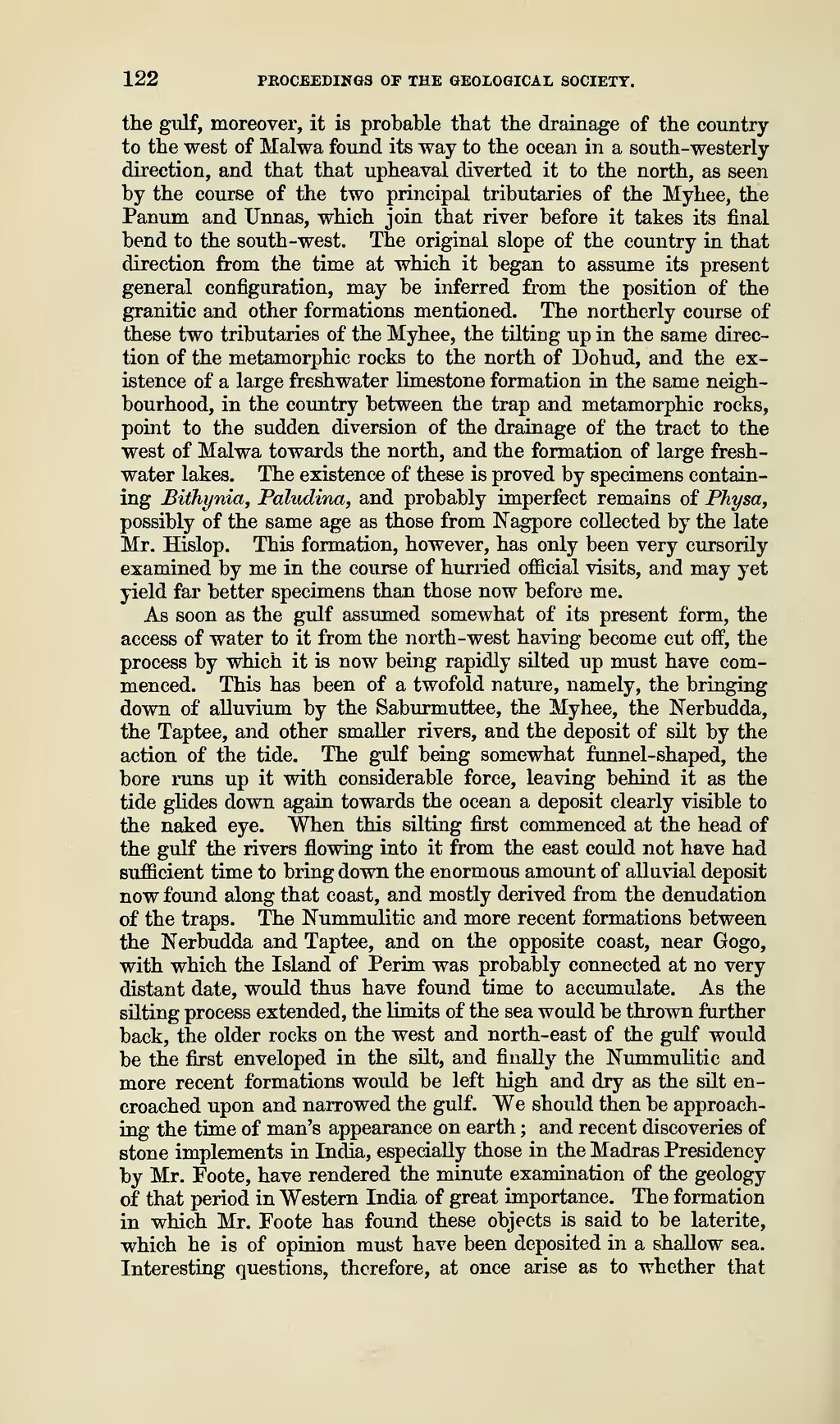122 PROCEEDINGS OF THE GEOLOGICAL SOCIETY.
the gulf, moreover, it is probable that the drainage of the country
to the west of Malwa found its way to the ocean in a south-westerly
direction, and that that upheaval diverted it to the north, as seen
by the course of the two principal tributaries of the Myhee, the
Panum and Unnas, which join that river before it takes its final
bend to the south-west. The original slope of the country in that
direction from the time at which it began to assume its present
general configuration, may be inferred from the position of the
granitic and other formations mentioned. The northerly course of
these two tributaries of the Myhee, the tilting up in the same direction
of the metamorphic rocks to the north of Dohud, and the existence
of a large freshwater limestone formation in the same neighbourhood,
in the country between the trap and metamorphic rocks,
point to the sudden diversion of the drainage of the tract to the
west of Malwa towards the north, and the formation of large fresh-water
lakes. The existence of these is proved by specimens containing
Bithynia, Paludina, and probably imperfect remains of Physa,
possibly of the same age as those from Nagpore collected by the late
Mr. Hislop. This formation, however, has only been very cursorily
examined by me in the course of hurried official visits, and may yet
yield far better specimens than those now before me.
As soon as the gulf assumed somewhat of its present form, the access of water to it from the north-west having become cut off, the process by which it is now being rapidly silted up must have commenced. This has been of a twofold nature, namely, the bringing down of alluvium by the Saburmuttee, the Myhee, the Nerbudda, the Taptee, and other smaller rivers, and the deposit of silt by the action of the tide. The gulf being somewhat funnel-shaped, the bore runs up it with considerable force, leaving behind it as the tide glides down again towards the ocean a deposit clearly visible to the naked eye. When this silting first commenced at the head of the gulf the rivers flowing into it from the east could not have had sufficient time to bring down the enormous amount of alluvial deposit now found along that coast, and mostly derived from the denudation of the traps. The Nummulitic and more recent formations between the Nerbudda and Taptee, and on the opposite coast, near Gogo, with which the Island of Perim was probably connected at no very distant date, would thus have found time to accumulate. As the silting process extended, the limits of the sea would be thrown further back, the older rocks on the west and north-east of the gulf would be the first enveloped in the silt, and finally the Nummulitic and more recent formations would be left high and dry as the silt encroached upon and narrowed the gulf. We should then be approaching the time of man's appearance on earth; and recent discoveries of stone implements in India, especially those in the Madras Presidency by Mr. Foote, have rendered the minute examination of the geology of that period in Western India of great importance. The formation in which Mr. Foote has found these objects is said to be laterite, which he is of opinion must have been deposited in a shallow sea. Interesting questions, therefore, at once arise as to whether that

